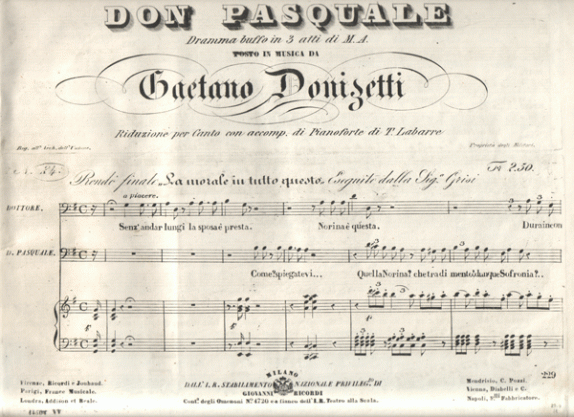Beyond the opera buffa: Donizetti’s Don Pasquale
19 June 2012
On the eve of the “Prima delle prime” conference dedicated to Gaetano Donizetti’s Don Pasquale, we asked our guest speaker, professor Claudio Toscani, how this 1843’s opera goes beyond the traditional features of the “opera buffa”.
The lecture, which is titled “La convivenza di comico e patetico”, is scheduled for tomorrow, 20 June 2012, at 6pm at La Scala’s “Arturo Toscanini” boxes foyer.
Can we say that within an ancient narrative pattern Donizetti operates a sort of “modernisation” of the characters and their relationships?
That’s very true. The plot is a classic of comic theatre. It turns around the character of a greedy old man who hopes to marry a pretty, clever young girl – of course in the end she will make a fool of him. Given that, Donizetti does not use this old pattern to retrace the opera buffa’s cliché. Instead, he stages much more real characters, bringing them into contemporary society, drawing them with care and precision, humanizing them, making them credible and consistent.
As one of the latest opera by Donizetti, how Don Pasquale represents a transformation of the opera buffa towards a characteristically romantic vision?
Choosing a story which has already been told many times, Donizetti does not aim to show the audience the usual opera buffa. In traditional comic opera, characters are kept at distance, and their vices and manias are so emphasized that the characters finally become puppets. For the comic effect to be achieved, a well perceptible emotional distance has to be estabilished between the scene and the onlooker. In Don Pasquale, on the contrary, the spectator is invited to be emotionally engaged in the characters’ fates and actions. This mechanism of identification is a fundamental prerequisite of romantic melodrama. And that’s the secret of the modernity of this opera.
Claudio Toscani is professor of Melodrama history and Musical philology at the University of Milan.
